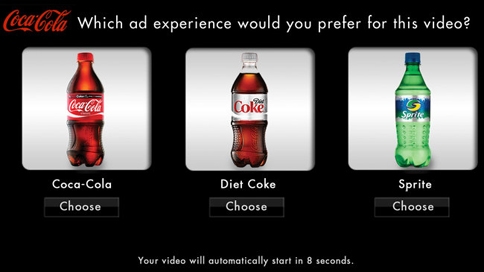I first began to notice interactive advertisements not long after I started using the Internet. This was still the dark era of obnoxious pop-up and banner ads that would scream “Congratulations!” every time a new page was loaded. This style of marketing was just about as bad as telemarketing and I don’t think I’m alone in thinking this way. These ads were wildly unpopular and a new approach was necessary if companies wanted to keep the attention of their audience. The first types of interactive ads I began to notice were modeled after games, allowing the viewer to play the game, and after winning or losing be forwarded to the page of
the advertisers product. This style, known as “advergaming” caught my attention because I found myself participating for fun while the ad was able to infiltrate my subconscious just like it was intended to. As time went on I began to notice to notice other kinds of ads utilizing this same type of concept.

Google AdSense was the next big change in the way ads were shown and consumed on the Internet. I’ve always wondered how these ads work because they are different depending on what you’re looking at. It works by using an algorithm that allows Google’s ads scan the page they are embedded in for keywords, which it then uses to try and find ads that are relevant to the content. These don’t always work (sometimes with hilarious results) but the concept is very interesting. This concept is taken even further with websites such as Hulu which allow to viewer to choose which kind of ads they prefer, and even allow them to watch one extended advertisement, or several shorter segments. Both of these examples have had a huge impact on advertising because they are much more likely to be clicked than ads that are completely irrelevant to the content on the page.

All of these techniques are relatively new, especially compared to the history of advertising and I’m very interested to see how far it will go. With the integration of social media into our everyday lives, I can see the potential for highly personalized, relevant advertising that might be so well integrated you might not even notice it is happening. One example of this might be product placement in movies that would change based on the viewer. As much as we want ads to go away, I think they are here to stay. They are just going to get smarter.
No comments:
Post a Comment